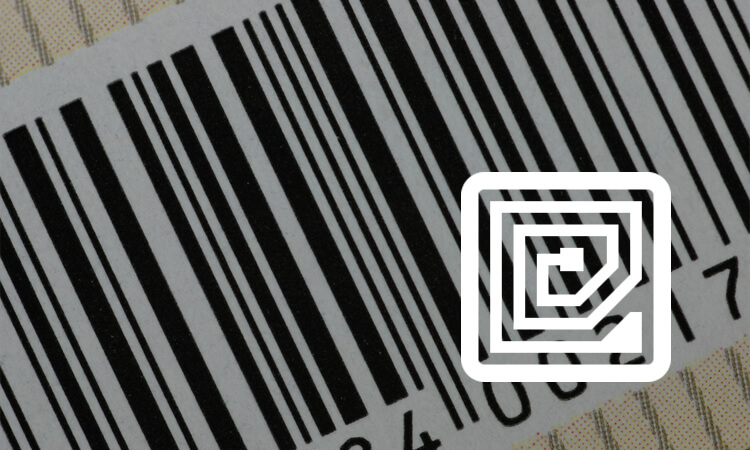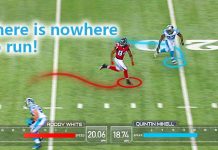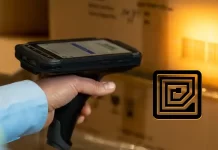Using RFID for data collection is becoming increasingly common in the healthcare industry. RFID data collection can help healthcare organizations effectively improve patient safety and optimize asset tracking. Using RFID tags with specific specifications and materials, healthcare organizations can enjoy real-time monitoring and control.
What is RFID Data Collection?
RFID data collection refers to the process of capturing, storing, and analyzing data obtained from RFID systems. RFID technology uses radio frequency signals to identify and track objects or individuals with RFID tags or labels. These tags have unique identifiers that RFID readers or antennas can read. This enables data collection on item location, movement, and identification.
RFID data capture uses readers or scanners to get tag information. Acquired data is processed, stored, and analyzed. It provides valuable knowledge for diverse applications, like inventory management and asset tracking.
Gathered RFID data includes tag IDs, timestamps, and location coordinates. It enables real-time visibility and precise inventory tracking. It enhances operational efficiency and decision-making in various industries.
Related Articles: Data Capture & Analysis in Healthcare
What Data was Collected for RFID?
RFID technology collects valuable data for efficient tracking purposes. The specific data collected through RFID systems include:

Identification Data
The primary purpose of RFID is to identify objects or individuals uniquely. RFID tags or chips carry unique identification numbers or codes that RFID readers can read. This identification data helps track and manage assets and patients in healthcare settings.
Location Data
RFID systems can provide real-time information about the location of tagged objects or individuals within a defined area. By monitoring the signals from RFID tags, the system can determine the approximate position of the tagged items. This data is particularly useful for tracking the movement of assets, patients, or personnel within a healthcare facility.
Sensor Data
Some RFID tags are equipped with sensors that can collect extra information. These include temperature, humidity, pressure, or motion. This sensor data can be valuable in healthcare applications. It can monitor environmental conditions or track the status of perishable items, medications, or medical equipment is crucial.
Event Data
RFID systems can capture event data related to the interaction between RFID tags and readers. For example, these events can be recorded when a patient’s RFID wristband is scanned for admission or medication administration. Event data provides a timestamped record of activity. It enables accurate tracking and audit trails.
Historical Data
By capturing and storing RFID data over time, historical data can be generated. This data can be analyzed to identify patterns, trends, and insights. It helps optimize processes, resource allocation, and decision-making in healthcare operations.
Where is RFID Data Stored, and How is It Stored?
RFID data is typically stored in the RFID tags or chips themselves. These tags are small electronic devices that contain a unique identifier. They can store and send data wirelessly using radio frequency signals. The tags can store various information, such as unique identification numbers, product details, and location data.
The type of RFID tag used determines how the data is stored. There are two main types of RFID tags: passive and active. Passive tags do not have an internal power source and rely on the energy from the RFID reader to power the chip. The data on passive tags are stored as an Electronic Product Code (EPC), a unique identifier assigned to each tag. The EPC can be linked to a database to retrieve additional information about the tracked item.
On the other hand, Active RFID tags have their own internal power source. This tag can send data over longer distances. The data on active tags is stored in non-volatile memory. This means it retains the information even when the tag is not used. Active tags can store more information than passive tags. The tag can be programmed to include additional data fields, such as temperature readings and location history.
Once an RFID reader collects RFID data, it is typically processed by software that extracts relevant information and stores it in a database. The database can be used to track and monitor assets, inventory, and other resources in real time. It enables healthcare providers to make data-driven decisions and optimize their operations.
Can RFID Store More Data than Barcodes?
RFID can store significantly more data compared to barcodes. While barcodes typically contain a limited amount of data, such as a unique identification number, RFID tags have the capacity to store a wide range of information. This includes not only identification numbers but also product details, manufacturing dates, end dates, and more.

Furthermore, RFID tags can be programmed to incorporate additional data fields. It makes them highly adaptable and valuable in healthcare settings. For example, they can store patient-specific information, instructions, and other relevant details. This versatility enables RFID technology to support various applications within the healthcare industry.
How RFID Data Capture Enables Asset Tracking and Improves Patient Safety
RFID data capture is instrumental in asset tracking and improving patient safety in healthcare settings. Here’s how:

Asset Tracking
RFID technology enables real-time visibility and efficient inventory management. It enhances asset tracking in healthcare facilities. Key benefits include:
- Real-time Location Monitoring: RFID tags send unique identification numbers to RFID readers. It allows healthcare facilities to track asset locations in real-time.
- Automated Inventory Management: RFID-enabled systems automate asset tracking, inventory management, and resource allocation.
- Loss and Theft Prevention: RFID data capture is a deterrent against asset loss and unauthorized access.
- Maintenance and Service Tracking: RFID tags store maintenance history and service schedules. These can facilitate proactive asset maintenance.
Patient Safety
RFID data capture significantly enhances patient safety by minimizing errors. These data ensure accurate patient identification. Here’s how it improves patient safety:
- Accurate Patient Identification: RFID wristbands or tags with unique identifiers ensure accurate patient identification. This can reduce the risk of medical errors.
- Medication Management: RFID technology verifies medication accuracy and tracks administration times. These improve medication adherence, promoting safe medication practices.
- Allergy and Alert Management: RRFID tags can contain patient-specific information such as allergies and medical alerts. This enables doctors quick access to critical patient data.
- Patient Monitoring: RFID-enabled monitoring systems track patient vital signs, location, and movement. These data facilitate prompt identification of deteriorating conditions and timely interventions.
RFID data collection streamlines asset tracking, enabling real-time monitoring and control. It improves operational efficiency, minimizes errors, and strengthens loss prevention. RFID enhances patient safety in healthcare through accurate identification, efficient medication administration, and real-time monitoring.
About RFID Data Collection FAQs
-
FAQ 1: Can RFID tags capture data?
RFID tags themselves do not typically capture data in the sense of actively sensing or recording information. RFID tags are passive or active devices that respond to radio frequency signals emitted by RFID readers.
-
FAQ 2: Can RFID track stolen items?
RFID technology can track stolen items with active RFID tags, but passive tags have a limited range and are less effective. However, RFID should not be the sole security measure to prevent theft.
-
FAQ 3: Does RFID have memory?
Yes, RFID tags have a memory that can store data such as unique identification numbers, product information, and other relevant data. The amount of memory varies based on the type of RFID tag and its intended use. Some RFID tags have read-only memory, while others have read-write memory that allows data to be written and updated. The memory capacity of RFID tags can range from a few bytes to several kilobytes, depending on the application’s specific requirements.











